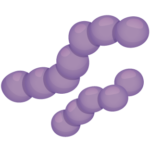Healthier Air
Our lungs provide oxygen and keep every other organ functioning by removing carbon dioxide from our body. Quality of the air we breathe, diseases and the environment can affect the health of our lungs and cause respiratory problems and seriously endanger our well-being.
Healthier Air
Our lungs provide oxygen and keep every other organ functioning by removing carbon dioxide from our body. Quality of the air we breathe, diseases and the environment can affect the health of our lungs and cause respiratory problems and seriously endanger our well-being.
Indoor vs Outdoor Air
Air pollution is a hot topic for human and environmental health these days, yet according to EPA (United States Environmental Protection Agency), indoor air is on average 2-5 times (or in some cases up to 100 times) more polluted. By some estimates indoor air pollution inside a typical home is responsible for as much as 50% of all illnesses, which is of no surprise as we spend up to 90% of our time indoors and continously breathe indoor air. In fact, the U.S. Environmental Protection Agency (EPA) considers indoor air pollution the number one environmental health problem in the United States.

Dust & Microbes
For every 100 square meters of living space your home acquires about 12 kg of dust per year. Dust is the primary “vessel” for mites, bacteria, viruses and germs to enter your lungs.

VOCs
Everything from cigarette smoke to gas stoves, from naturally occurring radon to chemicals in household cleaners, furniture, paints, etc. creates harmful VOC gases that linger indoors and land in our lungs.

Outgassing
Due to the out-gassing of furniture, mold, mildews, mites and fungi in a typical home, a baby crawling on the floor inhales pollutants equivalent to 4 cigarettes every day!

Sealed Air
Modern, well insulated homes are praised for energy efficiency, yet one side-effect is a much less air exchanged with the outdoors, resulting in pollutants building to dangerous levels rapidly.
VOCs gases
VOC (volatile organic compounds) are harmful gases emitted by a wide range of chemicals and solid objects produced with those chemicals, cooking, smoking, etc. Let’s look closer at typical VOC sources at home.

Health effects of VOCs exposure
The risk of health effects from inhaling any chemical depends on how much is in the air, how long and how often a person breathes it in.
Breathing in low levels of VOCs for long periods of time may increase some people’s risk of health problems. Several studies suggest that exposure to VOCs may make symptoms worse for people with asthma or who are particularly sensitive to chemicals. These are much different exposures than occupational exposures.
It is important to remember that VOCs refer to a group of chemicals. Each chemical has its own toxicity and potential for causing different health effects.
Common symptoms of exposure to HIGH levels of VOCs include:
Acute/short term exposures (hours to days)
- Eye, nose & throat irritation
- Headaches
- Nausea/vomiting
- Dizziness
- Worsening of asthma symptoms
Chronic exposures (years to a lifetime)
- Cancer
- Liver & kidney damage
- Central nervous system damage
Poor air quality can harm anyone regardless of age, but children are more susceptible to particle pollution than adults due to higher minute ventilation (higher intensity breathing) and higher levels of physical activity.
Some common indoor airborne viruses and bacteria

Coronavirus

Influenza virus

Varicella zoster virus (chickenpox)

Sealed Air

Staphylococcus aureus

Influenza virus

Varicella zoster virus (chickenpox)

Sealed Air
Keeping your indoor air healthy
Maximizing indoor air quality implies covering most critical aspects on regular basis.
Ventilation
Make sure you have adequate ventilation, especially when using chemicals for crafts, decorating, or cleaning.
Air Filters
Change air conditioner filters, which help remove house dust (but not microbes), in your home on a monthly basis.
Disinfection
Consider using Shikkui and Limix in your home. Air conditioning systems used forced air flow, which puts the contaminated air in continuous contact with Shikkui / Limix surfaces.
© Shikkui-Europe 2024 | Website designed by John Cole Creative
© Shikkui-Europe 2024
Website designed by John Cole Creative
